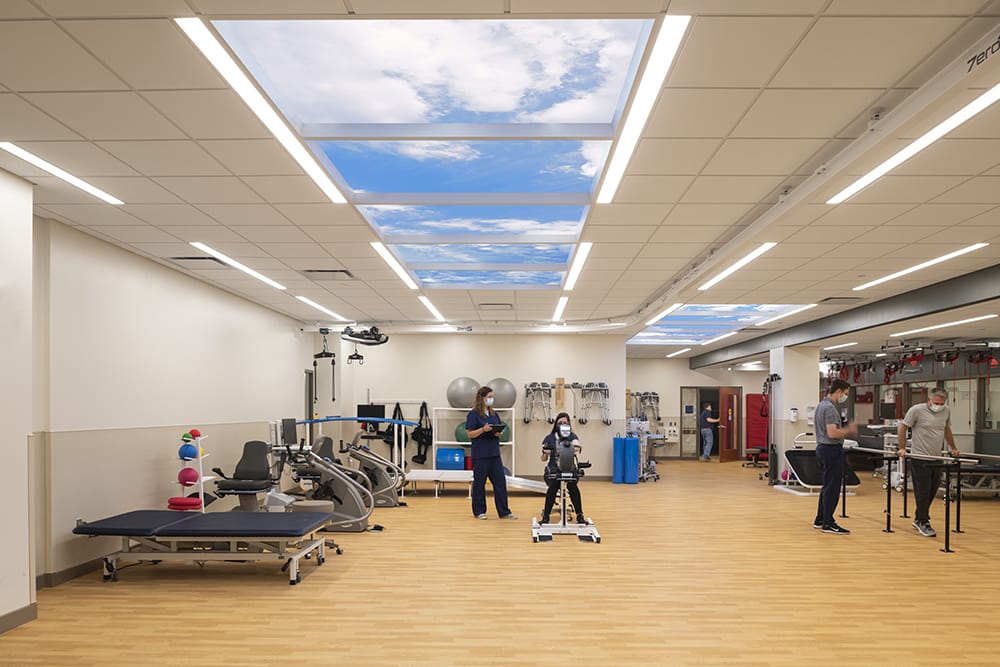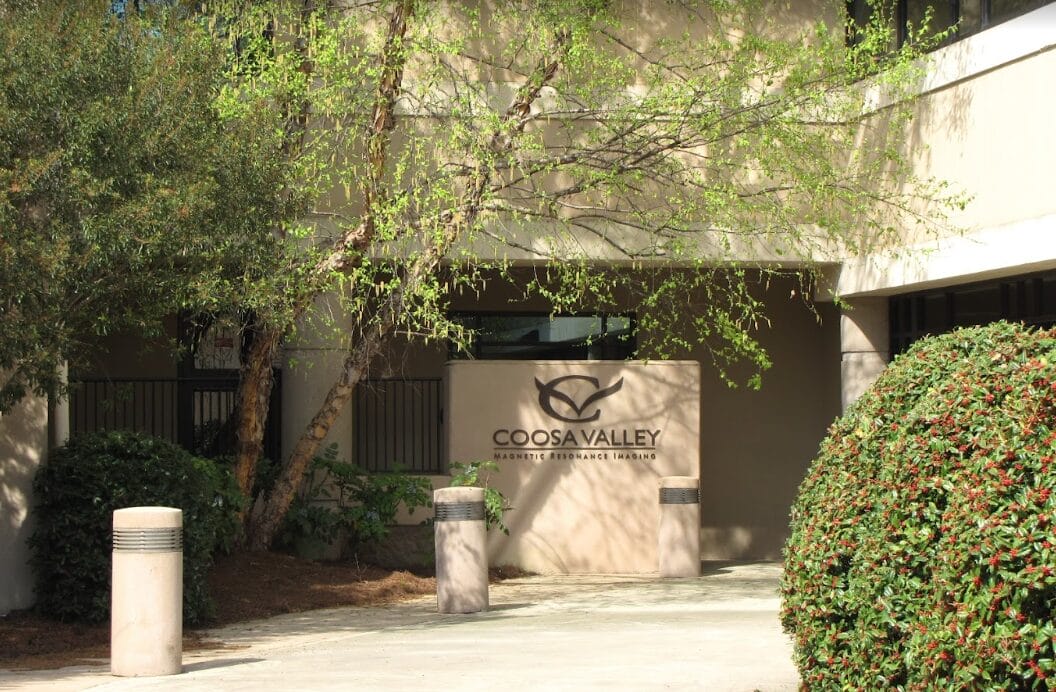Cognitive Biophilia, the idea that cognitive faculties like spatial memory, empathy, and depth perception can be co-opted to generate a tangible experience of affiliation with living systems—the traditional definition of Biophilia—made a big splash this summer. And the design framework behind Sky Factory’s architectural illusions of natureTM , which opens a new palette of spatial possibilities for enclosed interiors, made big headlines.
The brain’s role in synthetizing multisensory input through our hardwired habits of perception has gained new traction in light of the burgeoning field of neuroaesthetics. This nascent field has been studying the cognitive and embodied effect of the geometry of design embedded in nature’s patterns, as well as their expressive form in the visual arts—including architecture, on occupant behavior, disposition, and ability to perform.
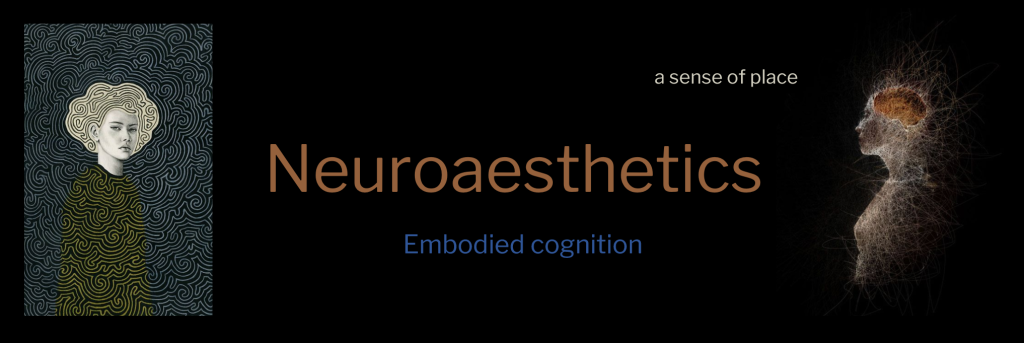
The collective effect of a given environment’s atmosphere—more than that the sum of its components or features—has given much food for thought to researchers across the globe. Why? Because the intangible sense of place our brain and body generate turns out to be an immediate, subconscious, and pervasive response to the aesthetic and action potentials we perceive (and the emotions generated by) a given environment.
In fact, our gut reaction to the built environment affects everything from our ability to think, be creative and resourceful, to our ability to command focused attention throughout the workday and keep our cool during stressful times.
Architectural audiences continue to uncover the therapeutic benefits of research-verified illusions of nature across typologies while editors from Salt Lake City, UT, and Greensboro, N.C., and across to London and Paris have taken note of the cost-effectiveness and adaptability of architectural illusions to redress the deleterious impact of interiors devoid of meaningful access to views of nature.
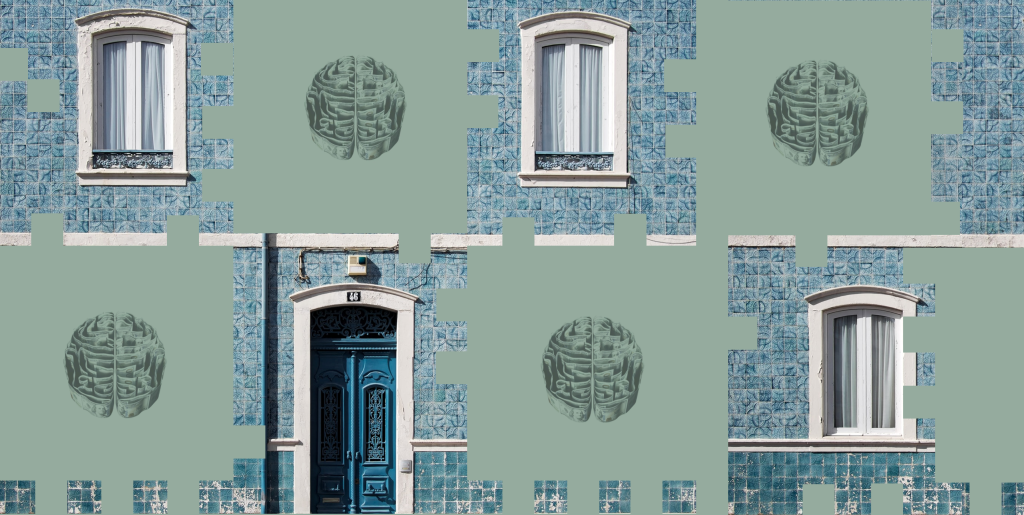
With workplace burnout a persistent concern in healthcare settings and tight labor markets besieging corporate America, commercial properties are looking for quick-to-deploy solutions that enhance occupant wellness in their office space portfolios.
Let’s take a look at the summer highlights:
AIA Utah Reflexion Magazine, Issue 3 – May 29
Reflexion, the official publication of AIA Utah, kicked off the summer by featuring a two-part, in-depth article exploring the restorative benefits of Cognitive Biophilia. The feature’s first part, published in May, discusses how the biological sciences have shifted our understanding of the built environment and its effect on human health and perception.
Moving away from the prevalent mind-and-body divide, cognitive neuroscience has detailed a more accurate understanding of the brain’s synthesizing ability; no longer an abstract mental faculty, but recognized as embodied cognition—noting that thinking, memory recall, and focused attention all share the same neural infrastructure that our physiology’s sensory and motor faculties use to navigate through space.
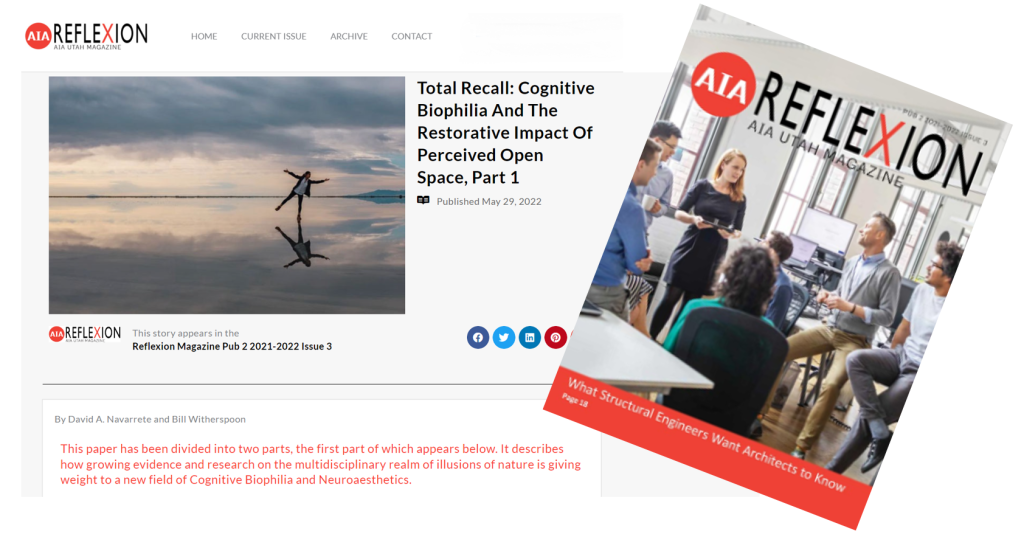
In this light, space and environment are not disembodied concepts that lie outside of our physical selves. They are now understood in direct relation to our body’s location and orientation within our surroundings. The perceived environment is also as much a result of its physical attributes and action potentials (affordances) as it is the result of the associated memories, experience and feelings (felt states) that inform our intuitions and preferences at a deeper, visceral level.
As such, we experience a sense of place in an emotive and subconscious way where the distinction between where our physical bodies end and the environment begins is no longer clear cut. According to cognitive psychology, architecture and the geometry of its design offer a continuum of experience where our brain and body are but the filters that intuit affinity with, or alienation from, its multi-sensory stimuli.
Acquisition International Magazine – July 25
In June, Sky Factory was nominated for a Research & Development Award by Acquisition International, a U.K.-based monthly magazine devoted to modern business and investment news. AI’s awards jury select companies, based on their track record, in one of 12 performance categories. Sky Factory was selected as the R&D category winner for its success in advancing the use of architectural illusions as valid, research-verified biophilic design applications over the last ten years.
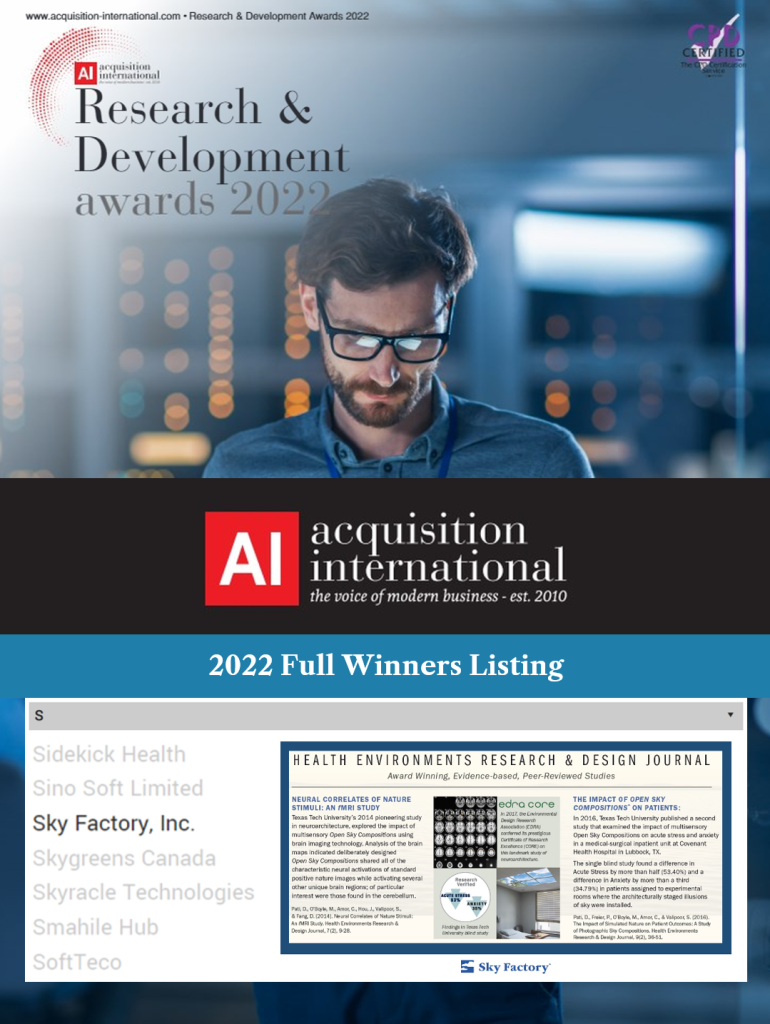
The company was nominated on the strength of its published, peer-reviewed research (Health Environments Research & Design Journal, 2014, 2015) and the string of international awards the studies generated, including citations from the International Academy for Design & Health (2014), the Environmental Design Research Association (2017), and Planetree International (2017).
The editorial jury for the R&D awards also took into account that Sky Factory’s products are the only installations of their kind to be research-verified biophilic design applications whose research has been presented at the Royal College of Physicians (European Healthcare Design Conference, 2019) and at The Salk Institute of Biological Sciences (Academy of Neuroscience for Architecture Conference, 2020 and 2018).
With the continued interest in sustainable guidelines within established building standards such as BREEAM, in Europe, and LEED (plus WELL) in the U.S., commercial property owners and managers are searching for evidence-based solutions for their portfolio. As Carl Elefante, the former president of the American Institute of Architects has succinctly noted, “the greenest building is the one that already exists.” Hence, the onus is on finding ways to retrofit older interiors to extend their longevity and usefulness without compromising the health, safety, and wellness of their occupants.
Sky Factory’s design framework is built to do just that, turning stressful and isolated interiors into environments that enhance the health and wellbeing of their occupants.
Springwise—Innovation that Matters – Aug. 15
Late mid-summer, SkyView, Sky Factory’s Digital Cinema Virtual Window—a self-contained monitor system that projects full motion sky events in a contemporary skylight framework, caught the keen eye of Springwise’s innovation editors. With its Ultra High Definition (UHD) capture and unedited, real-time depiction of the passage of clouds coupled with the soothing and familiar movement of overhanging branches and foliage, an example of Heraclitean Motion, Sky Factory’s SkyView remains a unique architectural feature.
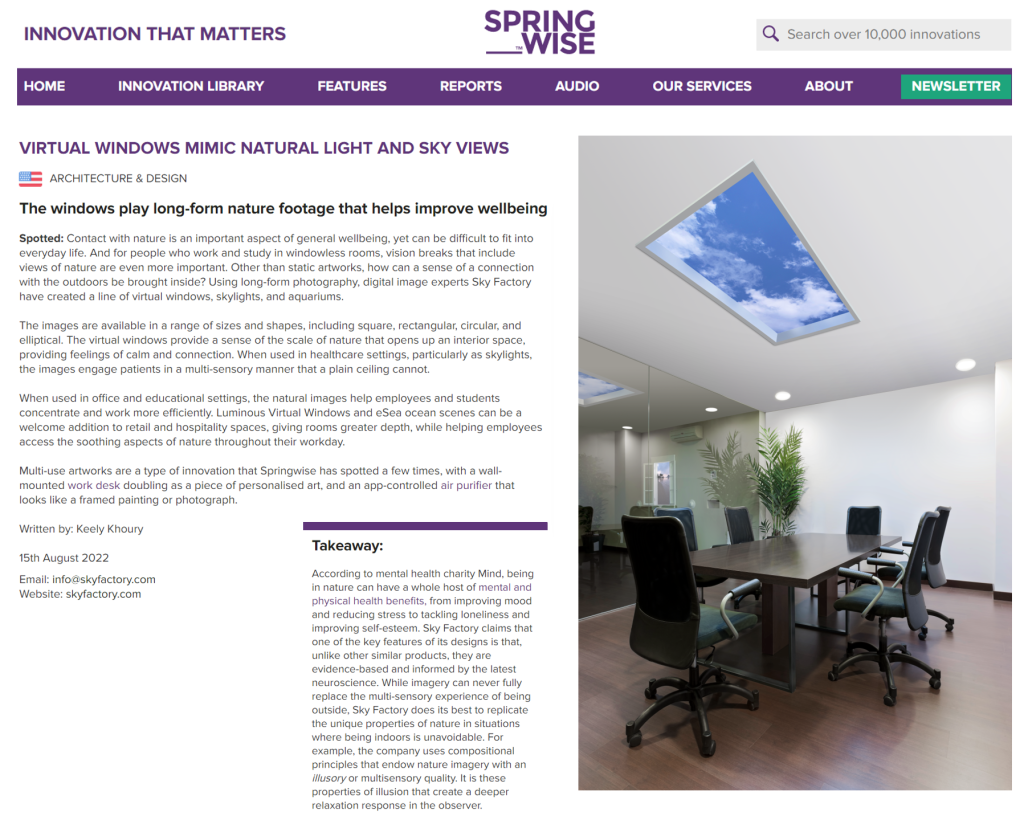
Unlike digital displays or monitor walls that broadcast edited nature footage accompanied by assorted soundtracks, SkyView stays true to the way we perceive nature. Through a real skylight, biophilic sky events would retain a tangible silence and tranquility. Furthermore, considering the architectural context of a skylight, the full motion sky illusion succeeds because it depicts Heraclitean Motion—the movement of natural forces generated by the Earth’s rotation, which gives atmospheric phenomena their soothing rhythm. The to-and-fro cadence of fluttering leaves and the perceived proximity to open skies flood the observer’s attention and our physiology responds by relaxing.
AIA Utah Reflexion Magazine, Issue 4 – Aug. 19
AIA Utah’s quarterly magazine, Reflexion, published Part II of its in-depth look at Cognitive Biophilia and how it can be leveraged in interiors lacking a genuine visual connection to nature. The article discusses how our emotional response to the built environment emerges, at the cortical level, from our peripheral autonomic nervous system and the sensory input from our sympathetic and parasympathetic subsystems.
These subsystems regulate both our arousal and energy expenditure, as well as the physiology’s relaxation and affiliative emotions, in relation to the characteristics of place. With a thorough understanding of our neurobiological response to the built environment, the adept designer can engage our hardwired habits of perception to create positive outcomes.
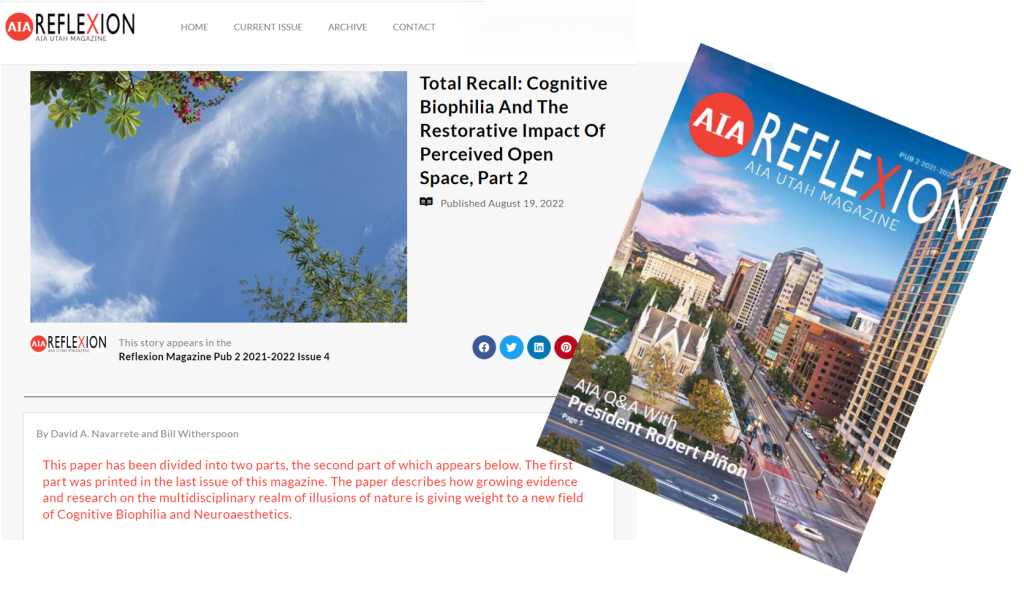
The main advantage lies in that architects can create perceived proximity to open skies in areas that are physically isolated from the exterior. By incorporating architectural illusions of nature in spaces that lack a meaningful visual connection to nature, architects can alter the observer’s visceral response to enclosed interiors.
As noted by Jennifer Groh, director of the Duke Institute for Brain Sciences at Duke University, and author of the book Making Space, even mentally picturing a visual stimulus elicits activity in the primary visual cortex, and depending on the size of the object being imagined, is also tied to the visual cortex map of space.
Therefore, when we picture the sky’s vertical vastness in our imagination, our memory also engages the areas of the brain associated with spatial cognition. The more this mental picture is stimulated by a bone fide representation—hence the power of a credible, bi-sensory sky illusion—the more these spatial maps are triggered, giving the illusory sky its vivid, and deeply relaxing properties.
ELLE – Sept. 14
ELLE, the world’s largest fashion magazine, with 46 international editions in over 60 countries, includes Sky Factory’s Digital Cinema Underwater Environment—eSea, in its flagship French edition this summer. Under its Health and Beauty section, the magazine features an article entitled, “Ocean Therapy: Continue to Profit from the Ocean’s Benefits with these Products.”
As the editors put it—“Can we still enjoy the benefits of the sea 300 kilometers from the coast? Thanks to these treatments, yes you can.” The feature focuses on new products that leverage the neuroscience of sensory processing to maximize their positive outcomes. eSea, Sky Factory’s self-contained Digital Cinema Virtual Window, which delivers the restorative benefits of a gallery-quality aquarium experience, made the list because it allows property owners to forgo regular maintenance costs, as well as the latent risks from water-borne bacteria that real aquariums carry.
Although designed for more demanding commercial environments, eSea remains an attractive, high-end residential product. Finished basements and other isolated interiors become even more attractive coves with seductive, feature-length 4K scenes of exotic marine environments. Flanked by a marine mist-scented, seawater concentrate by a biotechnology company specializing in skin care and a motion sensor-activated portable device that reproduces marine sounds, eSea is noted for its ability to reduce stress and anxiety while imbuing interiors with the silent elegance of underwater motion.
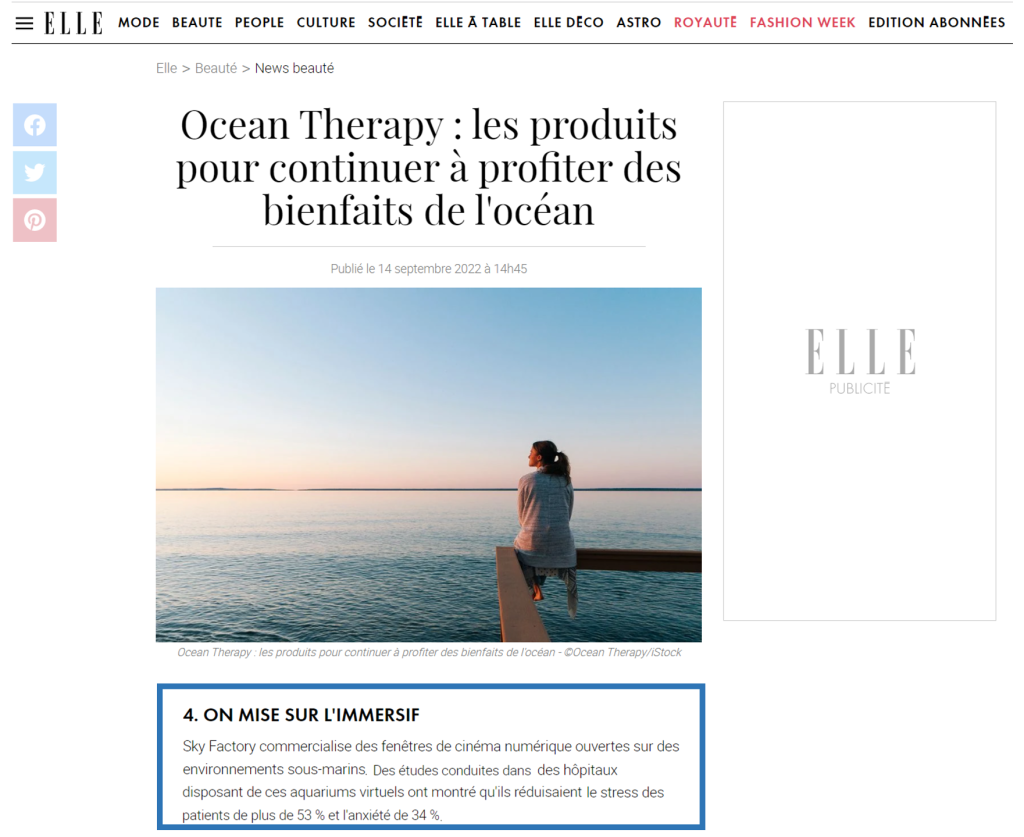
Accessible Living – Sept. 15
Sky Factory’s Aperture and Classic SkyCeilings are features in Werner House, a World War I French Opera Mansion, transformed by senior living designer, Lisa M. Cini, into an aging-in-place, residential design and technology showcase. The 10,000 sq. ft. mansion, originally built in 1914, brought together leading designers and manufacturers to create a live-in residence that doubles as an Airbnb rental.
This short-term rental option enables senior living property owners and managers to experience leading tech-enabled products, designed for seniors, while discussing a project’s potential with Lisa.
Werner House Woodland Manor Mansion has received a lot of press and is currently featured in Accessible Living, a new magazine devoted to aging-in-place and universal design residential projects. Among its many attractive features, the mansion’s basement has been converted into a home fitness and spa. Above the sauna and hot-cold spa, thermal relaxation takes on a multi-sensory turn with Sky Factory’s Aperture and Classic Luminous SkyCeilings. The virtual skylights open up the enclosed interior through a vivid illusion of open sky that restores a body of water’s natural relationship to the outdoors.
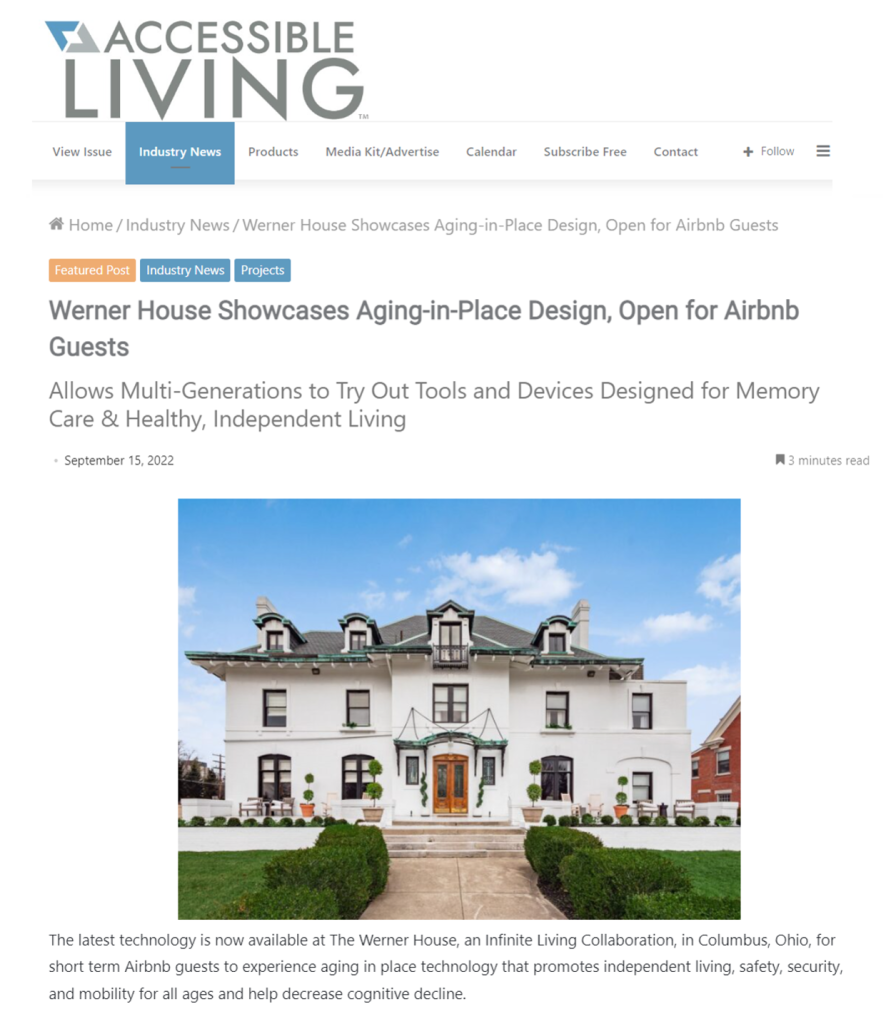
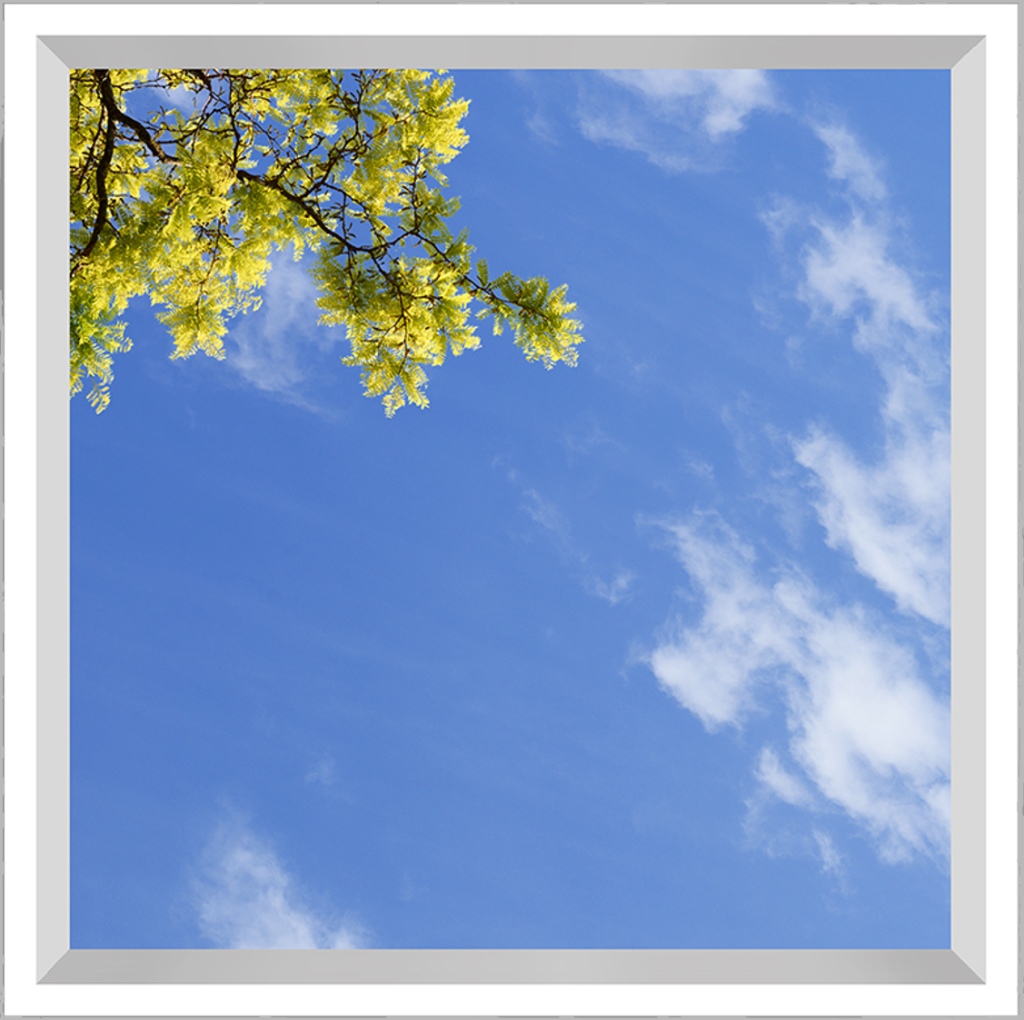
The summer has brought a lot of attention to Sky Factory’s design principles and biophilic aesthetic. The company’s architectural products are designed to transform enclosed interiors with restorative illusions of nature.
As an application of Neuroaesthetics, a new field that studies how the arts, through the geometry of design, can alleviate, soothe, and recharge our psycho-physiology in the built environment, illusions of nature enhance our embodied response to isolated or lifeless interiors. In other words, design is a powerful cognitive technology to enhance human wellness and emotional wellbeing.


